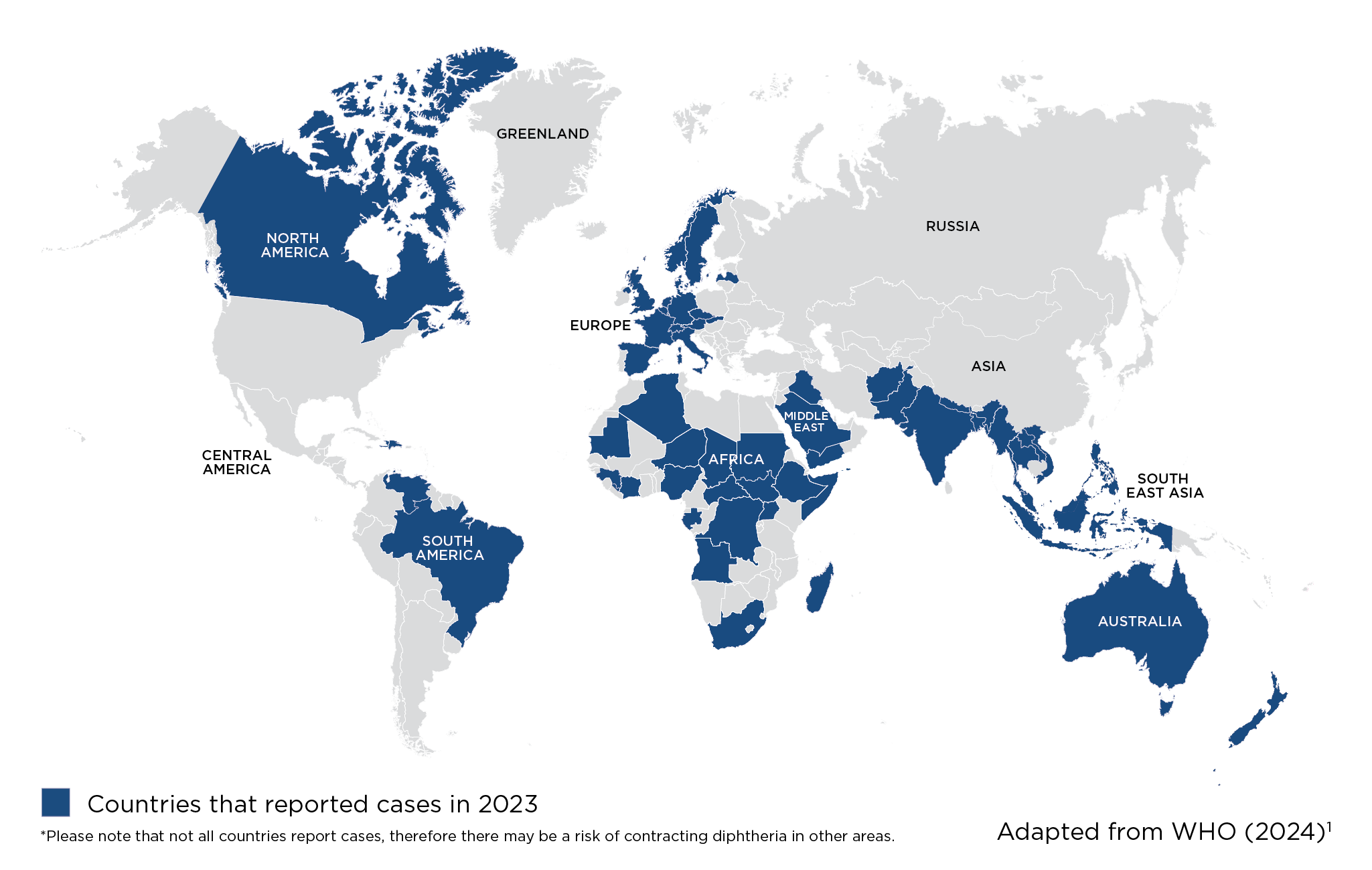Up to 10% of people with diphtheria die from complications.2
Risk areas for Diphtheria

FAQs
-
Key fact
-
How do you get diphtheria?
Usually spread through coughing or sneezing. It is also transmitted by close contact with someone infected with the bacteria which cause the disease, including sharing items such as cutlery, clothing or bedding.3
-
Which countries are affected by diphtheria?
Common in many countries in Asia, the Middle East, eastern Europe, the Caribbean and the South Pacific (see map).1,4
-
What are the symptoms of diphtheria?
The main symptom is a grey/white coating in the throat which can lead to difficulty in breathing or swallowing. It can also cause fever, sore throat and swollen glands in the neck.3
-
How serious is diphtheria?
Severe diphtheria can cause difficulty breathing and can be fatal.3 There may also be serious effects on the heart, kidneys and nervous system.5 You may need to get prompt treatment with antibiotics and antitoxin.3
-
Can I prevent getting diphtheria?
You can take the following precautions to help reduce your risk of infection:
- Visit your nearest convenient pharmacy or specialist travel health clinic for a risk assessment before your trip
- Wash your hands frequently, either with soap and water or alcohol-based sanitisers6
- Avoid contact with people who have symptoms of respiratory illness6
- Avoid sharing personal items such as eating and drinking utensils3
Ready to get started? Check now for your nearest travel health clinic.
Get friendly advice from the UK's largest network of travel clinics*.
* This list is not exhaustive and other travel health providers are available.
References
- World Health Organization. The Global Health Observatory. Diphtheria – number of reported cases. July 2024. Available online: https://www.who.int/data/gho/data/indicators/indicator-details/GHO/diphtheria—number-of-reported-cases. (Last accessed May 2025)
- World Health Organization. Immunization, Vaccines and Biologicals. Diphtheria. Available online: https://www.who.int/immunization/diseases/diphtheria/en/ (Last accessed May 2025)
- NHS. Diphtheria. January 2022. Available online: https://www.nhs.uk/conditions/diphtheria/. (Last accessed May 2025)
- Cleveland Clinic. Diseases & Conditions. Diphtheria. April 2022. Available online: https://my.clevelandclinic.org/health/diseases/17870-diphtheria. (Last accessed May 2025)
- Mayo Clinic. Diseases and Conditions. Diphtheria. April 2025. Available online: https://www.mayoclinic.org/diseases-conditions/diphtheria/symptoms-causes/syc-20351897 (Last accessed May 2025)
- Centers for Disease Control and Prevention. Yellow book 2026. Post-travel Respiratory Infections. April 2025. Available online: https://www.cdc.gov/yellow-book/hcp/post-travel-evaluation/post-travel-respiratory-infections.html. (Last accessed May 2025)
UK-BOTB-2500021 May 2025
